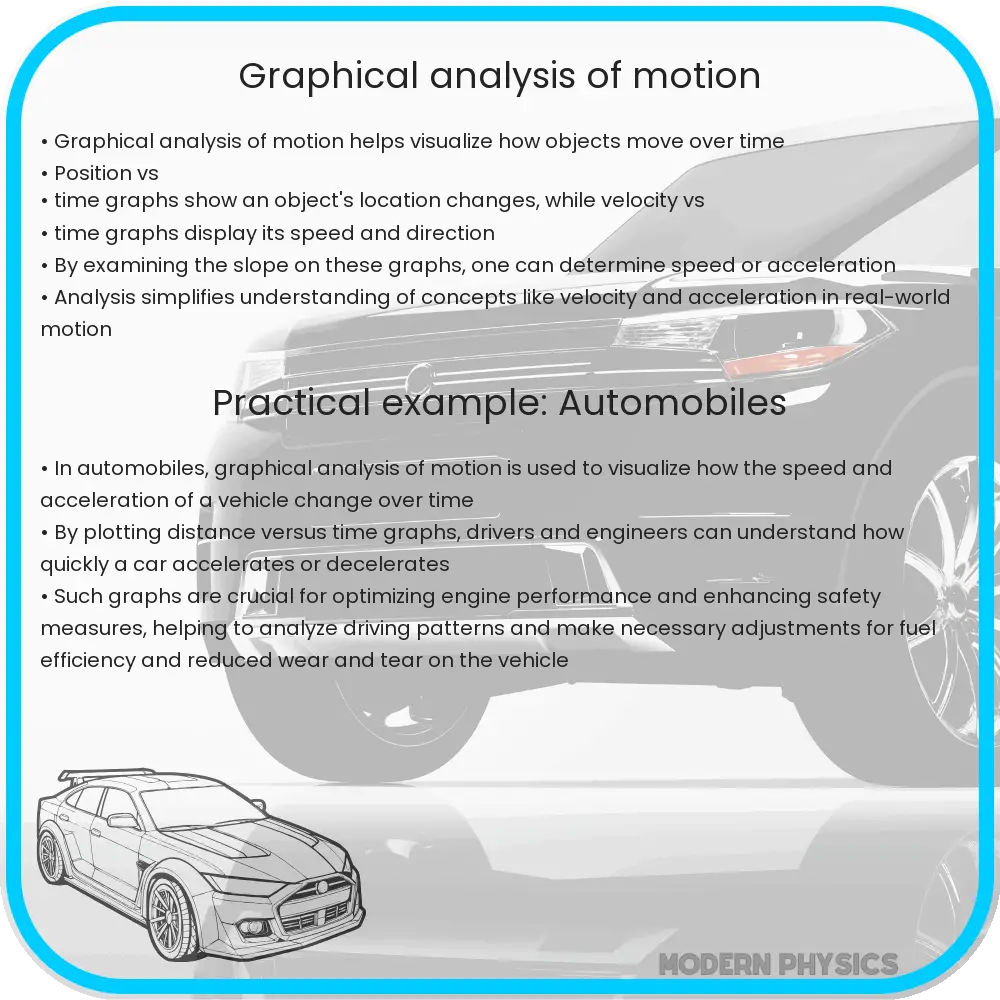Explore the essentials of kinematics in this insightful article, covering motion analysis, trends, accuracy, challenges, and real-world applications.

Understanding the Fundamentals of Motion: An Analysis
Motion, a fundamental concept in physics, is the change in position of an object over time. When we delve into the study of motion, particularly in the field of kinematics, we’re concerned with describing this motion without considering the forces that cause it. This article will explore the insights, trends, and accuracy inherent in the kinematic analysis of motion.
Insights into Motion
One of the key insights in kinematics is the understanding of different types of motion. Uniform motion, where an object moves at a constant speed in a straight line, and non-uniform motion, which involves changes in speed or direction, are the primary categories. These concepts are quantitatively described using variables such as displacement, velocity, acceleration, and time.
Analyzing Trends in Kinematics
Kinematic equations and graphs play a pivotal role in identifying trends in motion. For instance, a velocity-time graph can reveal if an object is accelerating or decelerating. The slope of this graph represents the object’s acceleration, while the area under the curve signifies the displacement. Similarly, position-time and acceleration-time graphs offer valuable insights into the nature of an object’s motion.
Accuracy in Kinematic Analysis
Accuracy in kinematic analysis is crucial, as it ensures the reliability of predictions and calculations. Errors can arise from various sources, such as measurement inaccuracies or simplifications in models. For example, air resistance is often neglected in basic kinematic problems, which can lead to discrepancies between theoretical predictions and real-world observations.
Moreover, technology plays a significant role in enhancing the accuracy of kinematic analysis. High-speed cameras, motion sensors, and computer simulations allow for more precise measurements and analysis of motion, leading to a deeper understanding of the principles governing it.
In conclusion, kinematic analysis offers significant insights into the nature of motion, helping us understand and predict the movement of objects in our universe. By analyzing trends through graphical representation and striving for accuracy in measurements and calculations, we can gain a more comprehensive understanding of the principles of motion.
Applications and Implications in Real World
The principles of kinematics are not just theoretical constructs; they have practical applications in various fields such as engineering, robotics, sports science, and even animation. Understanding the motion of objects is essential for designing machines, optimizing athletic performance, and creating realistic animations in films and video games.
In engineering, for instance, kinematic principles are used to design mechanisms that can move with desired motion patterns. In sports science, athletes’ movements are analyzed to enhance performance and prevent injuries. Similarly, in the world of animation, kinematic principles are applied to create more life-like movements of characters.
Furthermore, advancements in technology have made kinematic analysis more accessible and accurate. Tools like motion capture technology, used extensively in filmmaking and video game development, rely heavily on the principles of kinematics. These advancements not only improve the precision of motion analysis but also broaden the scope of its applications.
In summary, the study of motion through kinematics provides vital insights into the world around us. From the basic understanding of how objects move to the complex applications in various fields, kinematics plays an integral role in advancing our knowledge and capabilities in numerous domains.
Challenges and Future Directions in Kinematic Analysis
Despite the advancements in kinematic analysis, challenges remain. One of the primary challenges is dealing with complex motion scenarios, such as non-linear movements in turbulent environments. Additionally, the human element, especially in sports and biomechanics, introduces variability that can be difficult to model precisely.
Future directions in kinematic analysis point towards more integrated and sophisticated approaches. The integration of artificial intelligence and machine learning with kinematic models promises to improve the prediction and analysis of complex motion patterns. Furthermore, advancements in sensor technology and data analysis techniques are expected to provide deeper insights and higher accuracy in motion analysis.
Integrating Kinematics with Other Scientific Domains
The integration of kinematics with other scientific areas such as biomechanics, physics, and material science is another evolving trend. This multidisciplinary approach enables a more comprehensive understanding of motion, considering factors like muscle mechanics, material properties, and external forces like gravity and friction. Such integrations are particularly important in fields like prosthetics design and robotics, where understanding the interplay of various factors is crucial for innovation.
Conclusion: The Ever-Evolving World of Kinematics
In conclusion, kinematics, the study of motion, is a fundamental aspect of physics that provides crucial insights into how objects move in our world. Through the analysis of trends and ensuring accuracy in measurements, kinematics helps us understand and predict the movement of objects. Its applications extend across various fields, from engineering and sports science to animation and robotics.
While challenges in modeling complex and variable motions persist, the future of kinematics is promising, with advancements in technology and interdisciplinary approaches paving the way for more precise and comprehensive analyses. The integration of kinematics with AI and other scientific fields is set to revolutionize our understanding and capabilities in analyzing motion.
As we continue to push the boundaries of what is possible, kinematics will undoubtedly play a pivotal role in shaping the future of technology and our understanding of the physical world. It stands as a testament to human curiosity and our relentless pursuit of knowledge, driving innovation and discovery in countless domains.
